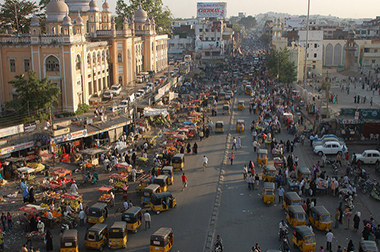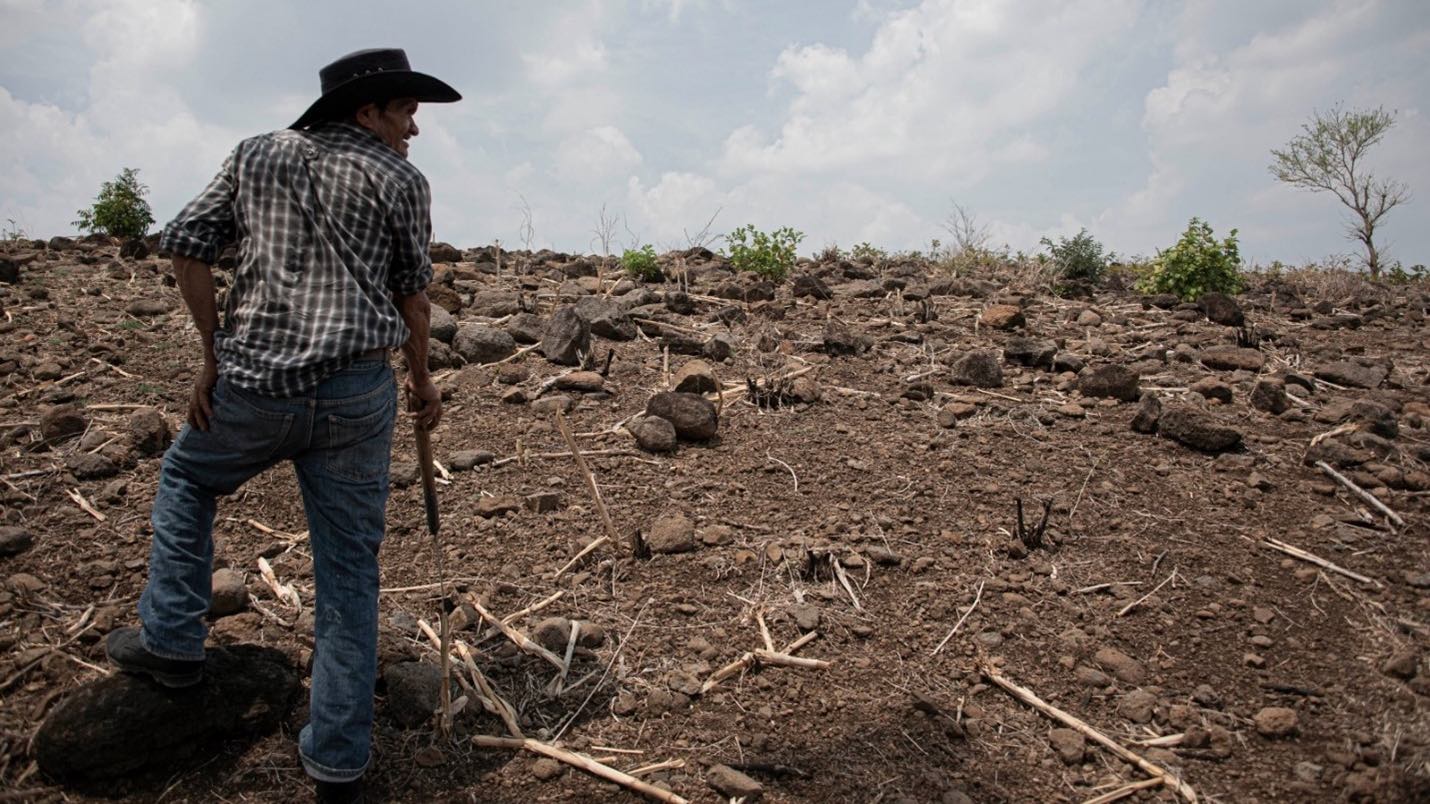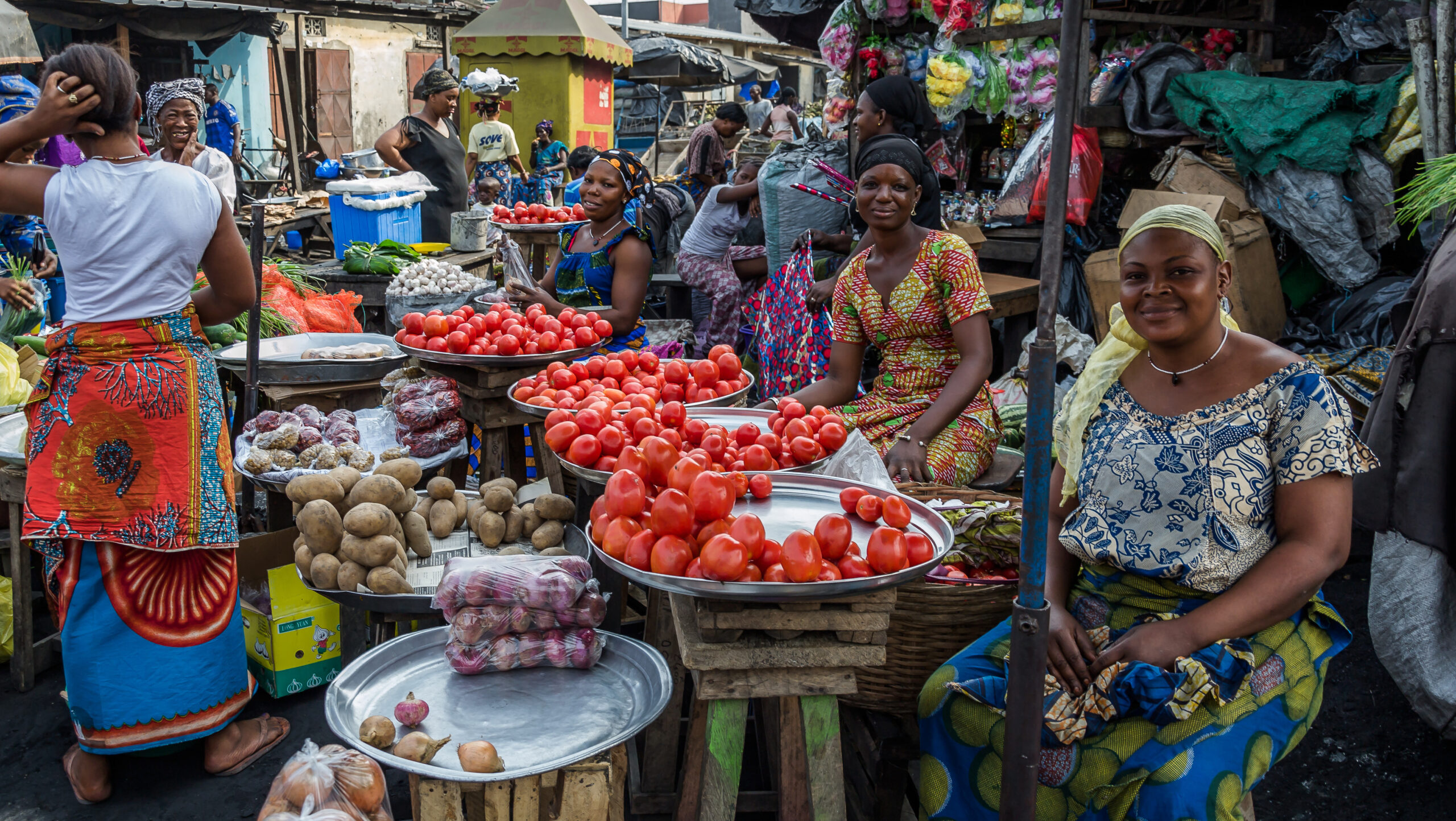The world’s urban population is growing rapidly. According to a new publication from The Chicago Council on Global Affairs, more people live in urban areas than rural areas today, and by 2060, 66 percent of the world’s population will live in cities. This growth is particularly obvious in developing regions. Africa’s urban population is projected to grow from its current 40 percent to 56 percent by 2050; Asia’s urban population will grow from 48 to 64 percent during the same period, while Latin America’s will rise from 80 to 90 percent.
This explosion in urban growth presents both challenges and opportunities for the global food system. According to the report, urban residents consume a larger share of the total value of food than rural consumers, due to both higher incomes and preferences for more diverse, and oftentimes more costly, food. Urban diets are shifting from reliance on staple foods, like grains, to include more fruits and vegetables, dairy and meat products, and processed foods. While the poorest households, mostly concentrated in rural areas, still depend almost exclusively on staple crops for their food consumption, grains have become a minority of overall food expenditures in terms of value in many countries, the report says. For example, in Ethiopia, Mozambique, Tanzania, and Uganda, the share of non-grain foods in urban households’ total food expenditures is, on average, 66 percent; in Bangladesh, Nepal, Indonesia, and Vietnam, this share is 74 percent.
This clearly represents a shift in the global food system, away from basic staple foods toward higher value processed foods whose production involves many more actors along the value chain. These expanding value chains present a major opportunity to lift smallholder farmers and rural households out of poverty by helping them transition away from subsistence agriculture into high-value agriculture, agro-processing, and non-farm labor. In particular, increased labor opportunities will help fight developing regions’ high youth unemployment rate; an estimated 60 percent of Africa’s unemployed population are between the ages of 15 and 24 and providing these young people with more and better job opportunities will be a key component of future poverty reduction and economic development. Finally, improving and expanding high-value food value chains will also benefit urban consumers, many of whom remain poor despite having higher incomes than their rural counterparts. Ensuring that food moves from rural areas where it is produced to urban areas in the least costly, most efficient manner will benefit people at both ends.
Expanding food value chains into higher value products is not without its challenges, however. As diets shift away from staple crops to more processed foods, populations may face new threats from obesity and noncommunicable diseases (NCDs) such as cardiovascular disease and diabetes. This will place an additional health burden on developing regions already struggling with hunger and malnutrition.
Poor or nonexistent infrastructure, such as roads, can make it costly, time-consuming, and infeasible for farmers in remote areas to bring their crops to market. In addition, these farmers often lack the financial resources, knowledge, and capacity to increase their agricultural production or improve their safety and quality standards to meet the demands of higher value urban markets. A related concern stems from issues of food safety; longer supply chains mean more steps along the way where food contamination can occur if improper storage, transportation, or handling practices are used.
Growing enough food to feed a rising urban population also poses some environmental concerns. Intensifying agricultural production can deplete the soil if done incorrectly, and increased fertilizer and pesticide use could lead to groundwater pollution. The production of higher value products like fruits, vegetables, and meat and dairy also requires more water use than staple crop production, which will put pressure on already scarce water resources in many regions. The demand for more food and higher agricultural production could also lead to the conversion of nonagricultural land, like forests or wetlands; these areas often serve as “carbon sinks,” and their conversion to farmland could release that stored carbon and increase greenhouse gas emissions.
Finally, food loss and waste could also increase as a result of longer value chains. The report cites that in 2011, as much as 32 percent of all food produced globally ended up either lost or wasted. While more recent studies in several countries (Bangladesh, India, and China) suggest that wastage rates for staple food value chains are lower than previously thought, food loss and waste remain significant challenges, both economically and in terms of food security, and will need to be addressed as value chains grow longer and more complex.
Solutions to these challenges exist, says the report, but will require coordinated investment from both the public and the private sector, as well as civil society actors.
The growth of the food and agribusiness sectors in low- and middle-income countries represents a major investment opportunity for private sector companies; the report states that in Africa alone, these sectors are expected to reach USD 1 trillion by 2030. Including and investing in smallholder farmers will be key in meeting the growing global demand for food and beverage products, as well as in addressing poverty and hunger. To meet both business and development goals, the report lays out several principles for inclusive, effective private sector investment in emerging food systems:
- Increase the efficiency and resilience of food systems by investing in agricultural intensification programs, road and transportation improvements, and overall value chain efficiency.
- Focus on smallholder inclusion and returns to the local economy to ensure that investments contribute to poverty reduction. This will include investing in local infrastructure development and providing training and capacity-building for local employees, small- and medium-sized local enterprises (SMEs), and farmers.
- Promote production of more diverse, nutritious foods while ensuring the safety and quality of those foods. This will again require investment in farmers’ and SMEs’ capacity and training to ensure their ability to meet food safety standards.
- Include environmental sustainability as a core part of their business models in low-income countries.
From the public sector side, policymakers need to continue and increase investing in agriculture, from agricultural extension services to research and development. Macro-level policies to maintain reasonable interest rates and support regional trade are also key in creating an environment that encourages private sector investment. To ensure that such policies are truly effective, policymakers will need to coordinate across multiple government ministries and include local city and town governments; this will ensure cooperation at both the national and the local levels regarding regulations for food safety standards, building of roads and other infrastructure, and establishment of wholesale markets.
To ensure the inclusion of smallholder farmers, women farmers, and other marginalized groups in agricultural growth and development, governments should also improve their land use and land tenure policies to protect such actors’ access to and rights to farmland. According to the report, research has shown that when farmers are more confident that their land is secure and will not be taken from them, they are more likely to make investments to improve production.
Feeding the world’s growing urban population, and ensuring food security and poverty reduction in both urban and rural areas, will require coordinated effort from all actors along the global food value chain. However, the growing demand for food and processed food products provides significant opportunities which, if properly taken advantage of, could help drive economic development and widespread gains in welfare across the world.







